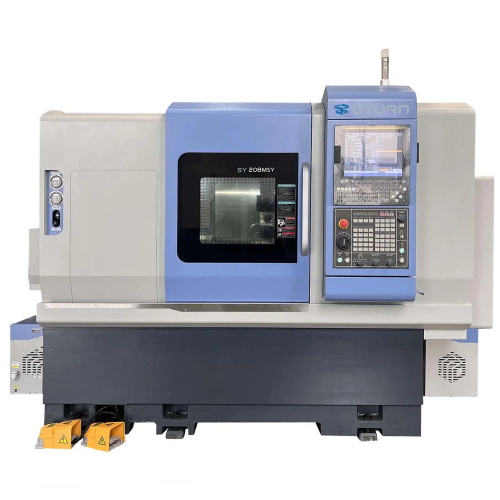With the continuous improvement of part machining accuracy and efficiency in modern manufacturing, CNC turning and milling center, which integrate turning and milling capabilities, have gained widespread application.
Their versatile machining capabilities provide a strong foundation for the efficient production of complex parts, particularly in the aerospace, automotive, and precision mold sectors. This article will explore the key technologies of milling CNC lathes from the perspectives of design requirements and structural components, providing industry professionals with a deeper understanding of the design and operation fundamentals of this equipment.
I. Design Requirements
· High Rigidity and Stability
Milling CNC lathe must simultaneously handle both turning and milling processes, placing extremely high demands on the rigidity of the spindle and overall structure. Milling processes involve high turning forces and a complex operating environment. Insufficient machine rigidity can easily lead to vibration and deformation, compromising machining accuracy. Therefore, design optimization of the structural layout and material selection is crucial to improve the machine’s vibration resistance, ensuring a stable machining process and guaranteeing part quality.
· Precision Control System
The CNC system of a milling-turning machine tool not only controls the basic spindle speed and feed rate but also synchronizes and coordinates turning and milling operations. Advanced control systems enable the precise scheduling of various processes, ensuring the accurate execution of tool changes and processing sequences, which significantly improves processing efficiency and end-product consistency. Furthermore, the CNC system should offer strong programming flexibility and exception handling capabilities to accommodate complex process requirements.
· Multifunctional Tool System
To handle diverse machining tasks, the tool system equipped with the machine tool must be flexible and adaptable. A multifunctional tool changing system enables rapid switching between tools required for turning, milling, and other processes, reducing workpiece setups, minimizing human error, and improving production efficiency. The design must balance tool fixation stability with the convenience of rapid tool changeover to ensure accurate tool positioning during machining and extend machine tool life.
· Efficient Cooling System
The heat generated during turning significantly impacts both machining quality and tool life. An efficient cooling system, through a stable supply of coolant, reduces tool and workpiece temperatures, minimizing turning forces and the risk of thermal deformation, thereby ensuring surface quality and dimensional accuracy. At the same time, the cooling system design should prioritize energy conservation and environmental protection, with appropriate control of liquid flow and injection patterns.
II. Structural Components
· Mainframe and Bed
The mainframe and bed are key structures that support the various machine tool components and the machining load. They are typically constructed of cast iron or cast steel, offering excellent rigidity and stability. A well-designed bed not only reduces the risk of deformation but also effectively absorbs vibration during turning, improving machine operation smoothness and machining accuracy.
· Spindle
As the core component of the machine tool, the spindle is responsible for rotating the turning tool. Its design must balance high precision and high rigidity to withstand high-speed, high-load turning environments. Using high-quality precision bearings ensures smooth spindle operation, reduces vibration, and improves machining quality and equipment life.
· Tool Holder
The tool holder must feature fast tool changes and high-precision positioning to support multi-process machining. A flexible tool holder design allows the operator to quickly switch tools between turning and milling, shortening machining cycles and ensuring tool stability and accuracy throughout each process.
· CNC System
As an indispensable high-end piece of equipment in modern manufacturing, the design and structure of CNC turning and milling machines directly determine machining performance and production efficiency. By optimizing the machine’s rigid structure, integrating a high-performance CNC system, and designing a flexible and efficient tool system, turning-milling machines play a key role in complex part machining. The inclusion of an efficient cooling system further ensures machining stability and tool life. With the advancement of industry technology, the design of future CNC turning-milling machines will place greater emphasis on intelligent control and system integration, providing the manufacturing industry with more precise, efficient, and versatile machining solutions.
OTURN is committed to providing customers with innovative, high-quality CNC turning-milling machine solutions. We will showcase our latest products and technologies at the upcoming EMO exhibition and look forward to in-depth exchanges and collaborations with partners and customers from around the world to jointly promote the digitalization and intelligentization of the manufacturing industry.
Post time: Aug-11-2025








